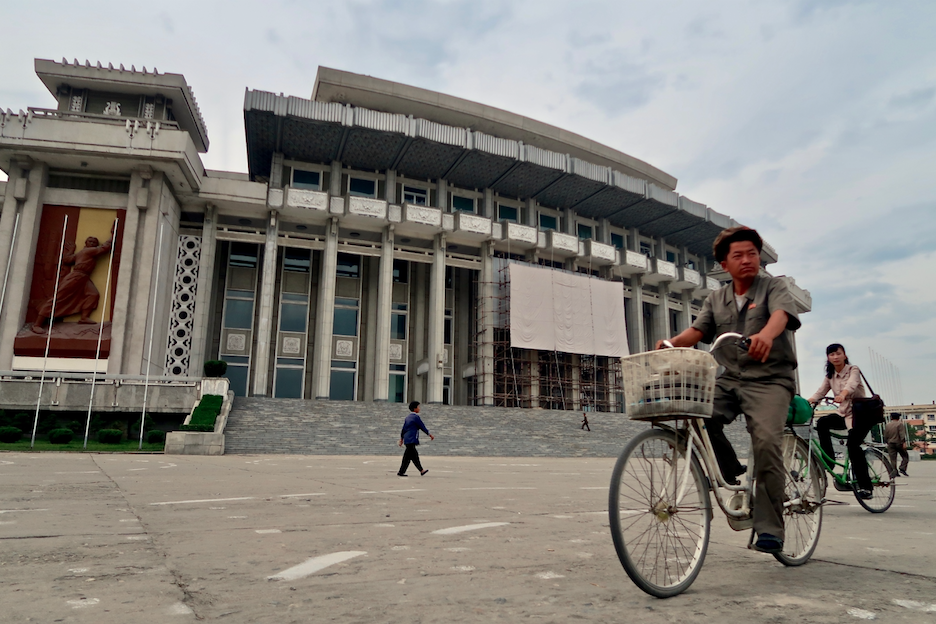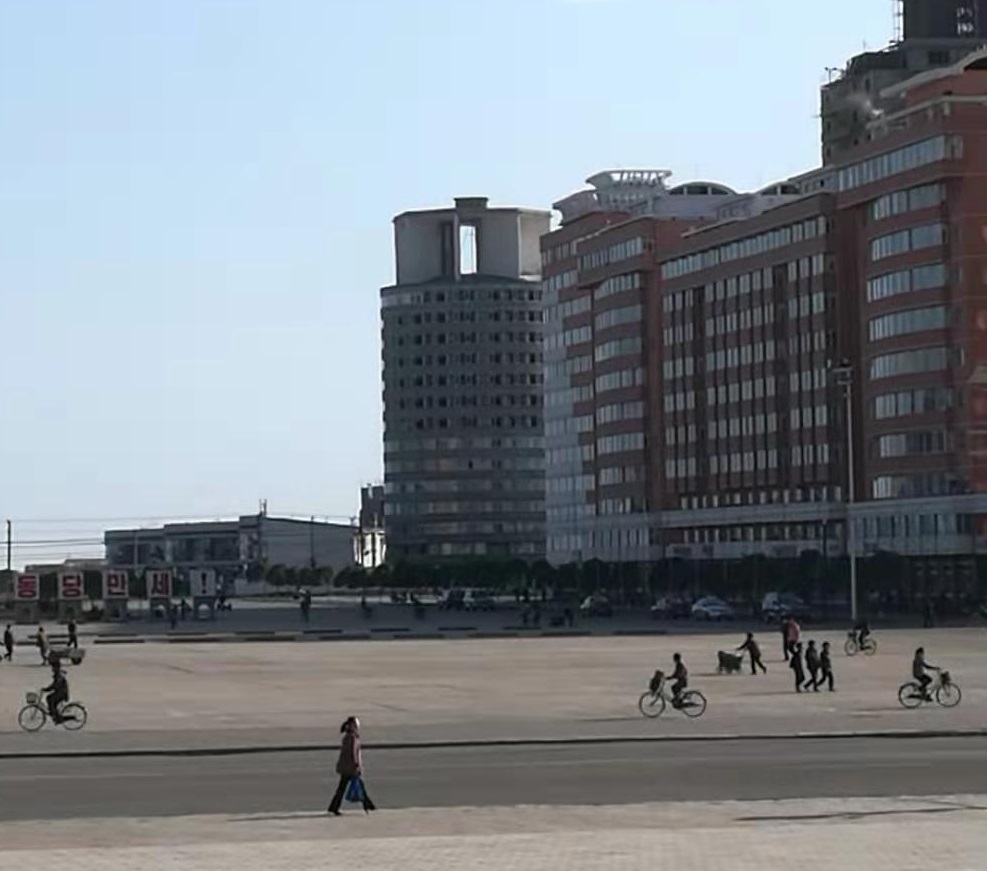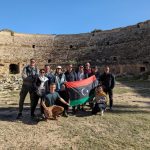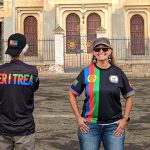Let’s face it, North Korea is an inherently interesting place. It’s one of the few places on Earth we can’t just load up Google and start digitally walking its streets. We can’t even talk to its citizens for the most part, so how the Hell do we know what’s going on there!? Well, we don’t know everything, but there’s some things we know for sure. Here’s 10 unusual facts about North Korea!
1: North Korea was Founded by Kim Il Su–
Okay, let’s stop right there. No. We’re not doing what every single damn list does and just listing off seven or eight things everyone knows, along with two or three complete myths everyone also already knows. Let’s start this off fresh and take a more interesting spin on it. If you’re here, you know the basics!
1: An Entire North Korean City Was Built By East Germans

We tend to think of North Korea nowadays as being ‘its own thing’. It’s hard to really imagine a world where North Korea had strong relations with anyone who wasn’t China, or maybe the Soviet Union. A country in Europe? That’s something else entirely. But it’s true! Following the Korean War, East Germany was actually North Korea’s third largest trading partner, following China and the USSR.
With the utter devastation of the war, the city of Hamhung (and Hungnam) were in desperate need of repairs, with few structures remaining standing. This is where good ‘ol socialist solidarity took to the stage. East Germany provided aid in the form of the ‘Deutsche Arbeitsgruppe’ (DAG), led by Konrad Püschel, a large team of planners, architects and craftsmen who were sent over with the aid of the East German government and with donations from their people.
2: North Korea Has Provided Food Aid to the South
Now this is obviously quite a while ago. 1984 to be precise, on September 30th following a series of harsh floods that devastated the south Korean countryside along the borders. While the south claimed to have the situation under control, the suggestion of aid from the north was nonetheless accepted.
It had been the first instance of cross-border ‘trade’ since the end of the Korean war 31 years prior, with an estimated 370 trucks crossing from the north to deliver food, medicine and other essential items to their flood-damaged neighbors. The total aid provided was estimated at 100,000 tons of cement, 7,200 tons of rice, 550,000 yards of cloth and 759 cases of medicine.
Reports from the incident variously claim the situation to have been tense and professional, or rather cheerful and promising in inter-Korean exchange. Whatever the case, it unfortunately doesn’t seem to have led to very much in the long term. Not long after, the collapse of the USSR began and the tables would turn on the north.
3: There Was Nearly an Anarchist Korea

Maybe cheating a little since this is pre-North Korea, but it feeds into the same context. From the violence of the Japanese war in both Korea and China, many factions were vying for power. One of the less talked about and remembered is the Korean People’s Association in Manchuria. Existing between August 1929 and September 1931, this movement formed from a merger of two large anarchist groups and became a powerful actor in Manchuria.
The Korean Anarchist Federation managed to straddle a rather interesting line. By simultaneously appealing to the nationalism of Koreans in Manchuria as well as the desire to simply meet basic needs, it was possible for such an organisation to take root and head the efforts of local movements, struggling to rebuild in the conflict. With no allegiance to Japan or China and with their homeland effectively sealed off, anarchism perhaps seemed a fair alternative.
From what little documentation there is, the Korean Anarchist Federation (KAF) proved very popular among the people. Society was designed to be non-hierarchical, with village assemblies comprising much of the present democracy. Workers co-operatives became the norm in production and coercion seemed pretty uncommon. This however all came to an end with the assassination of Kim Chwa-chin and the subsequent repression by both the Japanese and the Chinese communists.
4: There are Wind Powered Buildings in North Korea

It’s a pretty well known fact by now that electricity is a bit of a problem in North Korea, especially in the poorer provinces like North Hamgyong. In order to get around this, it’s not too uncommon to see solar panels everywhere and they’re quite proud of their hydroelectric power as well. To get a little further, they’ve had to innovate. To this end, the unique creature that is wind-powered buildings.
We don’t know exactly how many of these there are in the country, though at least two can be seen in Chongjin, sporting large turbines on the top that spin to provide power to the building as a whole. This kind of building is likely resource intensive and probably a real pain in the ass too, so we’re not going to see these on every single home. It’s simply another fascinating anomaly of modern North Korea under sanctions. Speaking of which…
5: North Korea has Wood Burning Cars Too

Perhaps a little less ‘clean’ than the above wind-powered building, but this is still another intuitive way of skirting sanctions. Oil imports into Korea are hard to come by and many cars and trucks, especially outside Pyongyang, utilize different means to power themselves. There’s claims of solar-powered taxis in some cities, but what I can certainly speak for seeing myself is the wood-powered cars.
Aside from the belching fumes from the top, getting the thing to power simply involves getting up to the engine and dumping some branches into the roaring flames! Coal would likely do the job too, though it’s probably better not to poison the passengers in the back depending on what kind of coal we’re dealing with.
6: North Korean Art is Global

You see that old fashioned looking fountain above? The one that looks unmistakably European? Yeah, that was made by North Korean artists.
Mansudae Art Studio is a fixture of tours to North Korea, being where the bulk of artwork is produced in the country. This ranges from posters to sculptures to pins and everything else! What they also have is the Mansudae Overseas Project Group and they certainly have their fingers in many different pies. Unusually for a North Korean entity, this group has commissioned works globally with this particular sculpture standing in Frankfurt, Germany.
Other notable projects conducted by this group include statues of African state leaders, a museum in Cambodia, the State House of Namibia, a 57 acre cemetery in Zimbabwe and a fifty meter statue in Senegal. These projects have simultaneously worked as cultural outreach, as well as a means of bringing extra money into the country, either through the direct commissioning of the sculptures or the joint-ownership of things like museums, existing for profit.
7: North Korean Animation is Everywhere
When you read about animation, cartoons and other such things, you generally imagine it was all done by the people encompassed in one of the logos shown at the start and the end of the film. This is not always so. There’s a common practice of subcontracting work to other studios for the sake of meeting crunch deadlines and cutting costs. In North Korea, the animation studio SEK (Scientific Educational Korea) is there to provide.
Some lesser known French and Italian productions worked with SEK directly, even having some staff members go to the country to work alongside its animators. For America, things got a whole lot more complicated. The hiring of this studio would typically be done through a third party and their name kept off the credits. As a result, North Korean animators have been involved in works as significant as the Simpsons Movie, Bender’s Big Score and an episode of Avatar the Last Airbender! (First episode of the Fire Nation arc by the way.)
There are some myths to go along with this though. It’s often claimed that North Korean animators worked with Disney to create Pocahontas and The Lion King! It is indeed true that these are films they helped create. Except… These were actually completely different movies made by the Italian studio Mondo TV which happened to have very similar names, for what are assuredly entirely coincidental reasons.
8: You Can Absolutely Get North Korean Pins… With Difficulty
One of the most constant sights you can have in North Korea is those iconic pin badges worn just over the heart. Typically, it will be a red flag-shape with a smiling Kim Il-Sung and Kim Jong-Il. Sometimes it will be a circular button with just one of them. In rare cases, the badge will be white rather than red and so on, with much variation between them. Every North Korean has one and they’re completely off-limits to buy for foreigners.
This isn’t to say you can’t get one though! The fact is, you have to earn it. People who are seen by the country to have earned the right to such a pin can go through a lengthy process to obtain one, including such things as writing an essay and going through a ceremony of sorts. When all the pieces are in motion, you’ll have a badge pinned on your chest and can feel proud to wear it! …Assuming you don’t mind a few strange looks in the west.
Theoretically, this process is available to anyone with the time and energy to pursue it, with quite a number of foreigners possessing such pins. There are even some staff at YPT who have earned the right to wear them!
9: There are Non-Korean Statues in North Korea

It’s quite a common perception that the only people venerated in North Korea are Kim Il-Sung, Kim Jong-Il and Kim Jong-Un. This is not exactly true. There’s quite a few statues to other iconic Korean figures, but what’s perhaps most interesting are the non-Korean ones. Most of which, naturally, spawned from the Korean war, such as the above monument to fallen Soviet soldiers in Chongjin, going so far as to include an obelisk with a red star, hammer and sickle and quote from Stalin in Cyrillic.
There also exists a monument to the People’s Volunteer Army of China in Pyongyang, a respectful grave for Mao Anying, son of Chairman Mao Zedong who passed away in the Korean war and even a reported statue of Chinese premier Zhou Enlai in the city of Hamhung. What these monuments represent is a strong respect for allies now long-gone that hint at the country’s status of not being a so-called ‘Hermit Kingdom’. The country had a wide range of foreign relations and partnerships that easily broke through all that.
10: Your Tour Itinerary is Flexible!
This one is stated on our site many times, but dammit, it bears repeating with emphasis. Your tours are not set on a rigid, unchanging path! Sometimes you’ll arrive at a spot and find it to be closed. So what to do? You can find somewhere else to go! Maybe the tour finishes a little earlier. What to do? Ask the guides where else you can go! If you do some research beforehand, you can even make some specific requests!
North Korea has a certain reputation for regimentation, so it’s natural that this stuff would be easily forgotten. Your guide doesn’t exactly just wander off and leave you be, so it may seem like you’re at the mercy of a guide and their strict tour path. That’s not at all the case. They want you to have a good time and so long as your request isn’t too outlandish, they’ll try and make it happen. It doesn’t hurt to ask! Make a list of things before you go, or even better, try organizing an independent tour! On tours like these, you can communicate with us beforehand what you want to do and we’ll see if we can make it happen.
We’ve had requests of everything from surfing to visiting old people’s homes. You can pick your hotel, the places to eat, what sites to see and you can do it all at your own pace! The guides aren’t there just to get you through it all, they facilitate the fulfillment of what you paid for. It’s never more clear than when you’re on an independent tour.
I hope you enjoyed these 10 unusual facts about North Korea and this was a little more interesting than your bog-standard 101 history lesson. There’s still far more I could have included! Maybe there should be a part 2 at some point…






